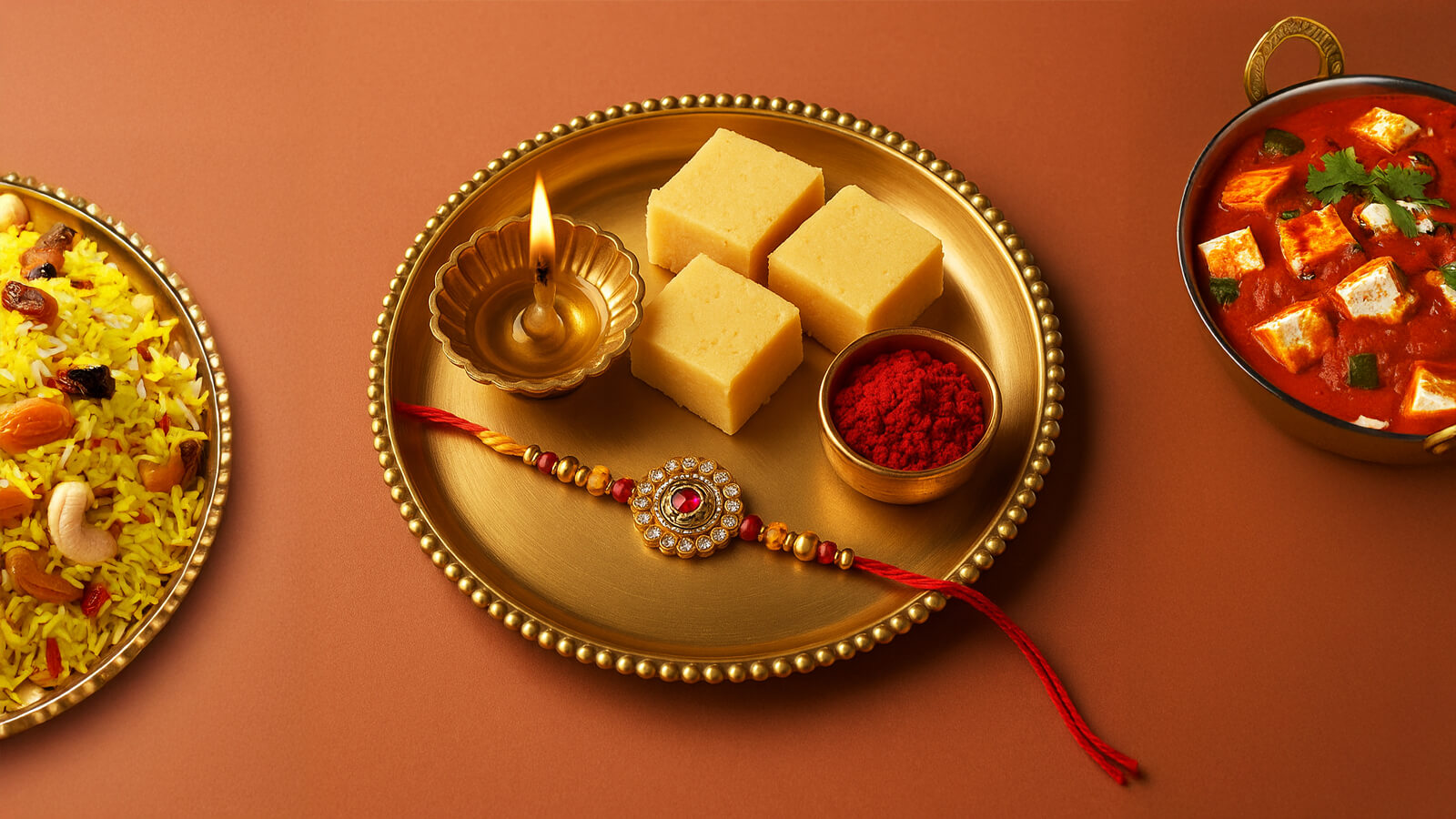A Food Guide To Celebrating Navratri

The Indian holiday season, particularly towards the end of the year, is marked by several significant religious festivals celebrated with grandeur worldwide. One of the key festivals leading up to Diwali is Navratri. Sharad Navratri, the most widely celebrated of the four seasonal Navratris, takes place during autumn. This festival symbolizes the triumph of good over evil and the renewal of faith and is dedicated to worshiping Goddess Durga and her nine divine forms.
This year, the 9-day holiday will be celebrated from October 3, 2024, to October 11, 2024. Different colors represent the significance of the nine days of Navratri.
- Day 1 (October 3, 2024) Shailaputri (Pratipada): Yellow
- Day 2 (October 4, 2024) Brahmacharini (Dwitiya): Green
- Day 3 (October 5, 2024) Chandraghanta (Tritiya): Grey
- Day 4 (October 6, 2024) Kushmanda (Chaturthi): Orange
- Day 5 (October 7, 2024)Skandamata (Panchami): White
- Day 6 (October 8, 2024) Katyayani (Shashti): Red
- Day 7 (October 9, 2024) Kalaratri (Saptami): Royal Blue
- Day 8 (October 10, 2024) Mahagauri (Ashtami): Pink
- Day 9 (October 11, 2024) Siddhidatri (Navami): Purple
Navratri is celebrated through fasting (vrat), meditating, and worshiping the nine forms of the goddess. The Navratri vrat (fast) lasts for the entire 9-day duration. During this period, Hindus observe fasting from the first day (Pratipada) to the ninth day (Navami). The fast is broken on the tenth day, Vijayadashami (Dussehra), after the final prayers are performed.
A sattvic diet is strictly followed during the nine-day festival. The sattvic diet is crucial to observing the fast as it provides spiritual and physical detoxification. The term "sattvic" refers to foods that are clean, light, and easy to digest, fostering a sense of calm, mental clarity, and balanced energy.
During this festival, Hindus observe a strict vegetarian diet and abstain from alcohol. Vegetables and spices such as garlic, onion, hing, turmeric, salt, mustard seeds, and fenugreek leaves are not permitted. Since table salt is not allowed, Rock Salt (Sendha Namak) is used as an alternative. Other spices that can be used are black pepper, green cardamom, cloves, cinnamon, and ajwain (carom seeds).
Fresh fruits commonly consumed during the fasting period include apples, bananas, pomegranates, and melons. Vegetables such as potatoes, sweet potatoes, raw bananas, pumpkin, bottled gourd, carrots, tomatoes, and spinach are permitted. While regular flour is typically avoided, alternatives like kuttu ka atta (buckwheat flour), singhare ka atta (water chestnut flour), and rajgira atta (amaranth flour) are used to make rotis and puris.
Sabudana (sago) is a popular ingredient used in many fasting recipes. Samak rice (barnyard millet) is used to prepare khichdi and pulao with minimal spices. Honey and jaggery serve as natural alternatives to refined sugar.
Dairy products such as milk, yogurt, paneer, and ghee are commonly used in various recipes. Buttermilk is a popular beverage during fasting. Nuts like peanuts, almonds, and cashews are incorporated into dishes. Coconut water and coconut milk are also frequently used, either in recipes or enjoyed as refreshing drinks.
Avoiding certain spices and vegetables aids in maintaining a sattvic diet which promotes calmness and mindfulness during the holy days. Dishes that are especially prepared during Navratri follow the fasting guidelines, using only permitted ingredients.
Some top Navratri recipes include Navratri Vrat Pakora, Falahari Fruit Chaat, Sabudana Vada, and Sabudana Chutney Bombs. Other common dishes enjoyed during the fasting include kuttu ki puri, samak rice, aloo ki sabzi, makhana kheer, and lauki (bottle gourd) sabzi.
In North India, every evening during the nine days of Navratri, families and their loved ones get together in traditional attire, to enjoy festive meals and perform folk dances like Garba and Dandiya Raas in honor of Goddess Durga. Navratri is the time of the year that provides an opportunity to enjoy delicious sattvic dishes that nourish the mind, body, and soul. The festival brings a unique culinary experience, with fasting foods that are flavorful using simple and clean ingredients.
Whether you're indulging in crispy Navratri vrat pakoras, savoring the sweetness of falahari fruit chaat, or enjoying the comforting flavors of lauki sabzi, Navratri provides a wonderful opportunity to celebrate tradition while enjoying nourishing meals. Patel Brothers hope the foods you relish during this time bring you peace, prosperity, and good health throughout these sacred days.





